Author: everbella
Can You Get Too Much Biotin?
If you’re like me, you’ve been taking Complete Biotin Plus every day and reaping the benefits. Thick, split-end free hair, unbreakable nails, increased energy, and more. But you may have noticed that my formula has 1750 mcg of biotin in it. While this may seem high, if you check most other store-bought biotin supplements, you’ll notice they have FAR more – some of them up to 10,000 mcg!
For those store brand supplements, they jack up the dose so high because they know that hardly any of it will get absorbed. So, they heavily increase the amount, hoping that your body will take in at least some of it.
For EverBella, we’ve increased ours from the recommended daily intake (RDI) so that you can have biotin in your system at ALL times. That’s the best way to get its full benefits. And, the RDI is really only the amount to avoid a deficiency. If you get 100% of your RDI every day, you’re really just toeing the line.
But still, even with all of this being said, you still may wonder if you can take too much biotin. Is there such a thing as a biotin overdose or biotin toxicity?
Keep reading to find out! We’re going to cover these questions, as well as a few basics of biotin just as a refresher.
What is biotin?
Biotin (or vitamin B7) is one of the many water-soluble B-vitamins that are necessary for your body to function. One of its main roles in the body is to metabolize macronutrients in order to regulate your metabolism. Another key role of biotin is in the nervous system, by helping the brain transmit nerve signals. B vitamins protect your brain and improve your memory and concentration, and biotin is no exception.
Another major function of biotin is creating the protein that makes up your hair, nails, and parts of your skin – keratin.
What are the benefits of biotin?
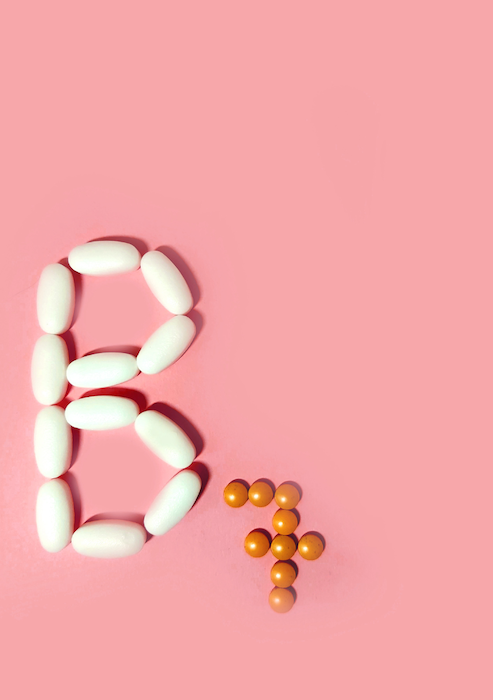
Biotin plays an important role in metabolizing glucose, fatty acids, and amino acids. Its role as an enzyme in the metabolism of amino acids is crucial for protein creation – like keratin – which results in building strong, healthy hair and nails.
Clinical trials have shown that it can help reduce brittle nails that easily split or crack. [1]
And participants in a Switzerland study saw a 25% increase in nail plate thickness following biotin supplementation. [2]
The same goes for healthy hair. Studies show that individuals with a biotin deficiency can benefit from supplementing biotin to help with hair growth. [3]
And when researchers have looked at people who have hair that’s brittle, unhealthy, or just refusing to grow, they’ve found that most of them are low in biotin! [4]
Hair is easily damaged by sun-exposure, overwashing, and constant heat from the hairdryer or other styling tools. As mentioned above, biotin plays a role in building the protein that helps regrow healthy hair, which is why it has become such a popular hair and nail supplement.
What are the signs of a biotin deficiency?
Symptoms of biotin deficiency typically come on gradually. [5]
These symptoms include:
- Thinning hair and hair loss on all areas of the body
- Brittle nails
- A scaly red rash around the eyes, nose, and mouth
In the most severe cases, a biotin deficiency can lead to:
- Neurological conditions such as depression
- Lethargy
- Hallucinations
- Tingling of the extremities
Those with a genetic disorder for deficiency in biotinidase – an enzyme that helps recycle biotin to be reused by the body – are at a higher risk of deficiency. Pregnant and lactating women should also be mindful of their intake. At least a third of pregnant women develop a slight deficiency regardless of normal intake, because the process of lactation lowers biotin levels.
So, can you get too much biotin?
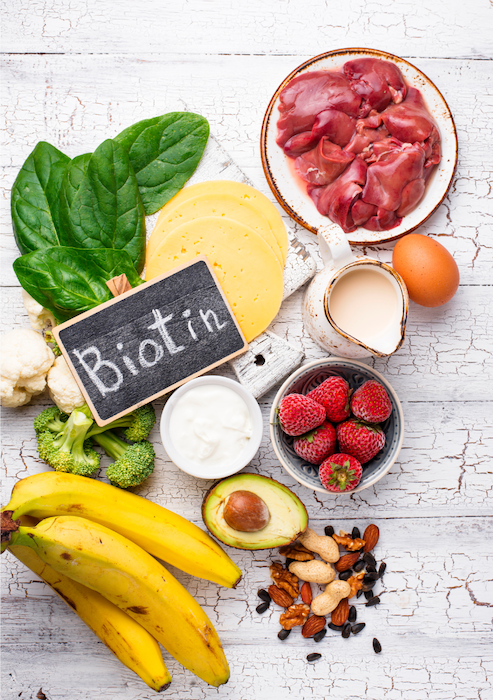
Biotin is water-soluble. This means that there’s no official upper limit for biotin because your body only stores what it needs. The rest is simply excreted in your urine.
The normal recommended biotin dosage for adults is 30 to 100 micrograms (mcg) per day. But as I mentioned earlier, this is quite low, especially if you’re looking to experience ALL of the benefits biotin has to offer. If your levels are just barely high enough, your body may use the little biotin it has to help with regulating the metabolism instead of growing your hair. While regulating your metabolism is good, you want it to do both, of course!
But while you could be getting too little biotin, there’s no evidence of high levels of biotin being harmful or causing toxicity. Research has suggested that even mega-doses of 300 mg (that’s 300,000 mcg) to help with treating multiple sclerosis have no adverse side effects. [6]
One caveat is that taking a lot of biotin can interfere with lab test results. The technology used to measure levels of thyroid hormones and vitamin D, for example, can show high or low test results. For this reason, it’s important to inform your doctor if you’re taking a biotin supplement. [7]
The other side effects of too much biotin are pretty nonexistent, but if you take too much of the biotin supplements beyond 10,000 mcg, you could potentially encounter digestive issues, as your body is working to flush out the excess biotin.
All of this being said…
You want to make sure you’re taking a biotin supplement that can actually get absorbed by your body and sent to where it needs to go. Why bother taking 10,000 mcg and crossing your fingers, hoping that your body not only takes it in, but allocates it properly?
EverBella’s Complete Biotin Plus is designed to be fully absorbed and used by your body. If you’re looking for results, this is it.
I’m so confident in my formula, that I give you 6 months to try it. If you’re not completely satisfied, simply return your order for a FULL refund.
>>> Click here to get started
What Is “Collagen Induction Therapy” (Or “Microneedling”)?
Have you ever been talking to someone about collagen and they bring up something called “collagen induction therapy” or “microneedling”?
Whether you have or not, let me explain what this process is, who it’s for, and how it works. That way, next time it’s brought up, you can say you already know all about it!
What is microneedling?
Microneedling is a cosmetic procedure often carried out by dermatologists in an attempt to naturally stimulate collagen production in the skin, helping to reduce wrinkles, acne scarring, stretch marks, or other blemishes.
This is done by pricking the skin with small, sterilized needles. The idea is that by using these needles to damage the skin, your body will repair the area with new, collagen-rich skin.
To help you better understand this procedure, let’s go over a few things.
Fast facts about microneedling
Safety
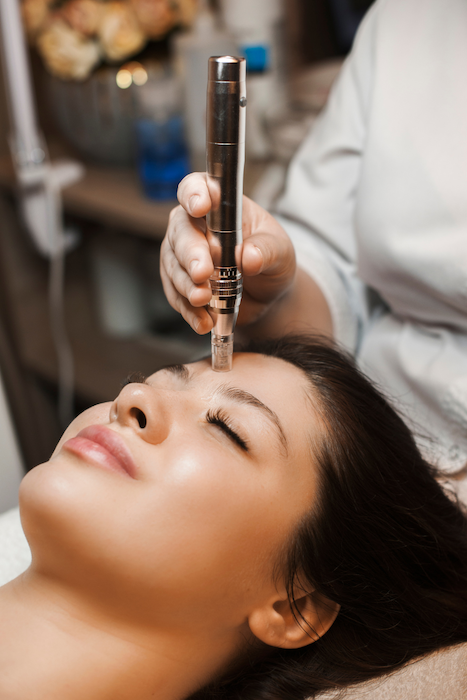
- Microneedling isn’t very invasive and doesn’t usually require much recovery time.
- It’s considered safe for most people.
- However, those who have active acne, are on acne medication, or are suffering from a condition like psoriasis or eczema should avoid the procedure. [1]
- Minor redness and irritation may occur for a few days following the procedure.
Convenience
- Generally speaking, from start to finish, each session lasts about two hours.
- It’s best to see a board certified dermatologist, plastic surgeon, cosmetic surgeon, or a supervised aesthetician for this procedure for best results.
- For best results, you will also need multiple treatments.
Cost
- Microneedling can cost anywhere from $200 to $800 per session.
- Considering you may need several sessions to start seeing results, this could run into the thousands.
- It’s typically not covered by insurance.
Efficacy
- Microneedling has been found to be somewhat effective in treating scarring related to acne, scars, stretch marks, and maturing skin. [2, 3, 4, 5]
- Skin may become brighter and firmer as well.
- Ideal results can be noticed after multiple sessions, however it may require long-term maintenance for consistent results.
Should you do it?
Microneedling has been found to be effective in facial treatments when consistently done, and there has been research showing that they can be effective in other areas of the body, such as stretch marks on the thighs and stomach. [6]
Whether or not you should try microneedling is up to you. A numbing agent is typically applied, so you don’t feel the pricking of the needles on your face or body.
However, side effects like bleeding, bruising, infection, or peeling are not unheard of and should be taken into consideration.
You also need to factor in the hefty cost and the regular visits to the clinic. This could bring you into the tens of thousands over a single year.
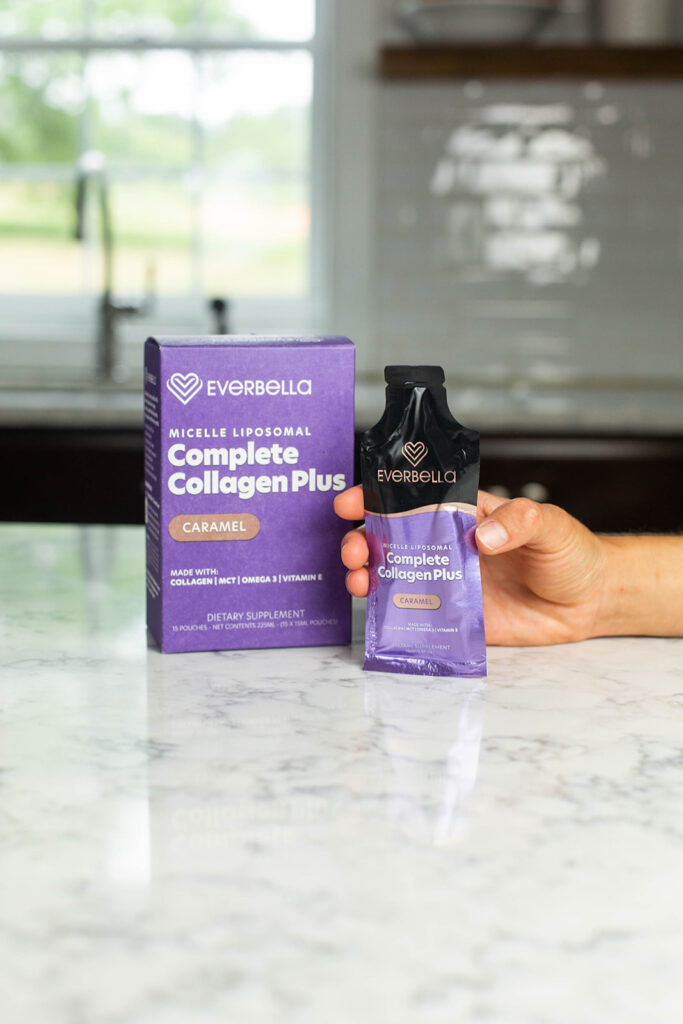
Personally, I prefer another way…
I don’t love the idea of having a bunch of needles poked into my face. I understand the idea of it – to promote the creation of collagen – however, I’d prefer to just send more collagen into my body.
You can do this with Complete Collagen Plus. The collagen peptides are protected by lipid molecules – micelles and liposomes – so you can trust that they’re actually making it into your system fully intact.
Not only can you pump up your collagen levels from the comfort of your own home, you can do it at a fraction of the cost you’d pay for microneedling, and it tastes amazing!
And when you ingest collagen, you get to send it to other parts of your body that may need it, like your bones, joints, and hair.
Complete Collagen Plus also contains other nutrients and compounds that even further support your health!
>>> Click here to learn what they are and how they serve your health
7 Health Benefits Of Selenium (Backed By Science)
When you think of important vitamins and minerals, selenium may not be on the top of your list.
But it should be.
After reading today’s article, you’ll understand the importance of this essential mineral. It plays a major role in many functions throughout your body and can only be obtained through diet or supplementation.
So let’s take a look at the 7 most important health benefits of selenium!
1. It’s a powerful antioxidant.
Free radicals are normal byproducts of bodily processes like metabolism. However, they can also be created by exposure to cigarettes, alcohol, processed foods, stress, and more.
Free radicals are unstable atoms that damage the cells of your body, causing what’s known as oxidative stress. [1]
Oxidative stress has been linked to several chronic conditions as well as premature aging, especially within the skin. [2, 3, 4, 5, 6]
Thankfully, we have antioxidants, which neutralize free radicals, greatly reducing the damage they cause. Selenium is one of these antioxidants that can help keep your body free from oxidative stress! [7]
2. May reduce the risk of cancer
On top of reducing oxidative stress, selenium can help lower the risk of certain cancers.
This is because selenium has been found to not just reduce oxidative stress, but DNA damage, it can boost your immune system, and actually destroy cancer cells. [8]
A review of 69 studies that involved over 350,000 people found a clear link between higher levels of selenium in the blood and a lower risk of breast, lung, colon, and prostate cancer. [9]
Selenium has also been found to help people undergoing cancer treatment. For example, one study found that selenium supplements improved quality of life and reduced symptoms of chemo in women with cervical and uterine cancer. [10]
3. Can protect against heart disease
Low selenium levels have been linked to an increased risk of heart disease. As such, maintaining levels of selenium can help keep your heart healthy.
In a review of 25 observational studies, a 50% increase in blood selenium levels was associated with a 24% reduction in the risk of heart disease. [11]
Selenium has also been shown to reduce markers of inflammation in the body, which is a major risk factor for heart disease.
For example, an analysis of 16 studies which involved over 433,000 participants who had heart disease showed that daily selenium supplements decreased levels of certain inflammatory markers. Not only that, but it increased levels of glutathione – one of the most powerful antioxidants out there. [12]
This shows that selenium intake can help lower the risk of heart disease by decreasing both inflammation and oxidative stress within the body. This may greatly lower the risk of the buildup of plaque within the arteries, which has been known to cause strokes, heart attacks, and heart disease. [13]
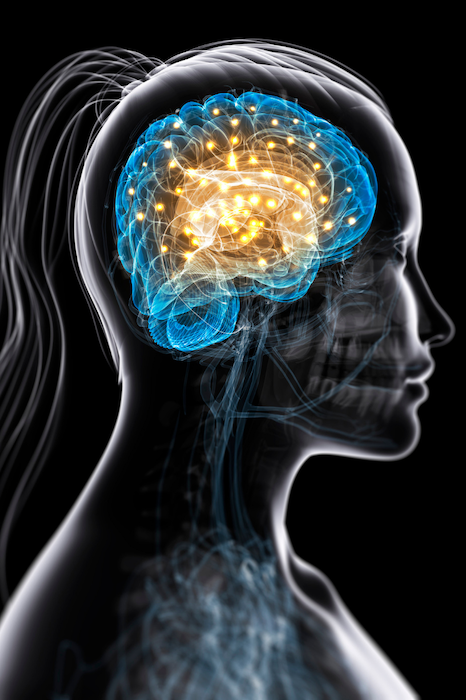
4. Helps prevent mental decline
Oxidative stress is believed to be involved in both the onset and progression of neurological diseases like Parkinson’s, multiple sclerosis, and Alzheimer’s disease. [14]
Interestingly, several studies have shown that patients with Alzheimer’s disease have lower blood levels of selenium. [15, 16]
One study also found that eating Brazil nuts every day – one of the best sources of selenium – resulted in improved speech and mental functions in patients with mild cognitive impairment. [17]
On top of that, research has found that those on the Mediterranean diet – which is rich in high-selenium foods like nuts and seafood – have a lower risk of developing Alzheimer’s disease. [18, 19]
5. Supports thyroid health
The tissue in your thyroid contains a higher amount of selenium than anywhere else in your body. This is because selenium is integral for the proper functioning of your thyroid gland. [20]
Selenium plays an essential role in the production of thyroid hormones while protecting the organ against oxidative damage.
You want to ensure that your thyroid is healthy, as it regulates your metabolism and controls growth and development. [21]
Selenium deficiency has been linked to thyroid conditions such as Hashimoto’s thyroiditis, a type of hypothyroidism in which the immune system attacks the thyroid gland.
One study which included over 6,000 people found that low selenium levels were associated with a higher risk of thyroid conditions. [22]
On top of that, some research has indicated that selenium supplements may help those with thyroid conditions. [23]
6. Boosts your immune system
Your immune system keeps you healthy by targeting and eliminating anything that can threaten the health of your body, like bacteria, viruses, and parasites.
As an antioxidant, selenium plays an important role within the immune system, reducing inflammation and enhancing immunity.
Studies have found that high levels of selenium in the body enhances the immune response, while a deficiency actually harms immune cell function and leads to a slower immune response. [24]
Research has also indicated that selenium supplements may help bolster the immune system in those who are sick. [25]
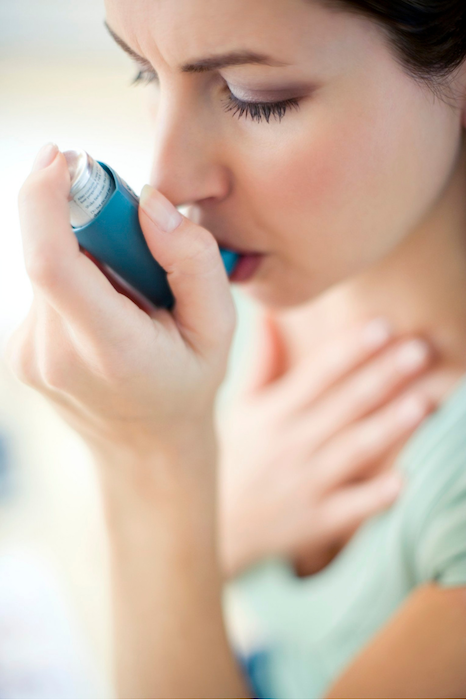
7. May help reduce asthma symptoms
Asthma is a chronic disease that affects the airways that carry air in and out of the lungs. With asthma, these airways become inflamed and narrow. As such, the severity of asthma has been linked to increased levels of oxidative stress and inflammation in the body. [26]
Due to this, selenium may be able to reduce the symptoms of asthma,
In fact, research suggests that people with asthma have lower blood levels of selenium. One study even found that asthmatic patients with higher levels of selenium has better lung function than those with lower levels. [27]
Selenium has also been found to reduce asthma symptoms. For example, one study found that giving people with asthma daily selenium supplements allowed them to better control their symptoms. [28]
What’s the best way to get selenium?
Now you know the importance of ensuring that you get enough selenium. But it can be difficult to do so through diet alone.
For example, Brazil nuts are among the best sources of selenium. However, not all Brazil nuts are the same. One study looked at Brazil nuts from varying sources and found that some of the nuts had 288% of your recommended intake, while others only provided 11%. [29]
On top of that, you then have to hope that your body takes in all of that selenium so that it can actually benefit your health.
In my newest product, Complete Biotin Plus, the Plus stands for other compounds I’ve included other than biotin that can benefit not just your hair growth, but your health!
Selenium is one of these compounds!
And it’s infused with EverBella’s micelle liposomal formula so that you can be confident you’re getting enough of this important mineral each and every day.
To learn more about this, PLUS what other beneficial ingredients are in my Complete Biotin Plus formula…
14 Self-Care Tips For Migraines
If you suffer from migraines, then you know that they can be debilitating. Not only do they cause pain and throbbing in your head, but they can also make you feel nauseous and lightheaded. In some cases, migraines can even lead to vomiting or extreme fatigue.
I don’t want you or anyone you know to have to suffer through migraines. That’s why I wrote today’s article on how to help. If you want to try to prevent, reduce, or calm migraines, then follow these 17 self-care tips!
1. Spend time in nature
According to a study published in the journal Headache, spending time in nature can help to reduce the frequency and intensity of migraines. The study found that participants who spent at least two hours per week in green space experienced fewer migraines than those who didn’t. The researchers believe that the peaceful environment and fresh air may help to relax the mind and reduce stress levels, which can trigger migraines. In addition, being in nature can also help to increase levels of serotonin, a chemical that helps to regulate mood. So next time you’re feeling a migraine coming on, head to your nearest park for some fresh air and relaxation!
2. Keep a symptom journal
For people who suffer from migraines, managing the condition can feel like a never-ending battle. There are a variety of potential triggers, and it can be difficult to identify patterns without keeping careful track. This is where a symptom journal can be an invaluable tool.
By taking note of when migraines occur, what symptoms are present, and what possible triggers may have been present, it becomes much easier to start identifying patterns. Once patterns are identified, it becomes possible to take steps to avoid triggers and minimize the frequency and severity of migraines. For many people, keeping a symptom journal is an essential part of effectively managing migraines.
3. Drink enough water
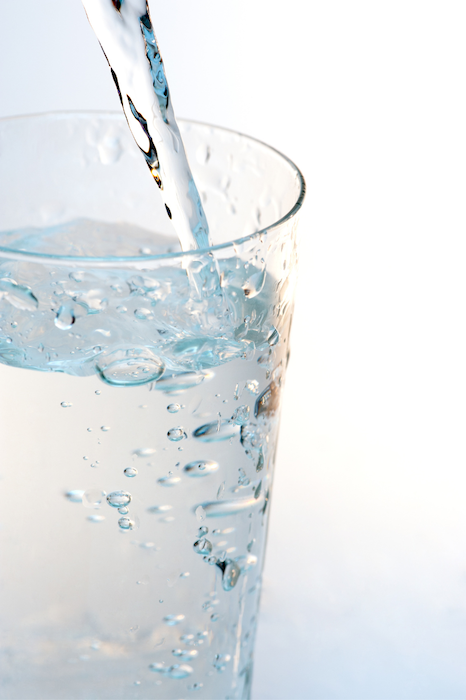
Migraines can be debilitating, and often seem to strike without warning. While there is no surefire cure for migraines, there are certain things that can help to lessen their frequency and intensity. One of the most important is staying hydrated.
Dehydration is a common trigger for migraines, so it’s important to drink plenty of water throughout the day. Aim for eight glasses of water per day, and make sure to drink even more if you are exercising or sweating profusely. In addition, try to avoid dehydration by avoiding caffeine and alcohol, which can both contribute to dehydration. If you are susceptible to migraines, staying hydrated is essential in helping to prevent them.
4. Eat on a regular schedule
One of the most important ways to lessen the frequency and severity of migraines is to eat on a regular schedule. Skipping meals or going too long without food can trigger a migraine, so it’s important to eat breakfast, lunch, and dinner at roughly the same time each day. This will help to keep your blood sugar levels stable and prevent hunger headaches. If you stick to a healthy, regular eating schedule, you may find that your migraines become less frequent and less severe.
5. Limit alcohol
Research has shown that drinking alcohol is a trigger for nearly one-third of people who experience migraines. If you’re trying to reduce your migraine attacks, limiting your alcohol intake can be an effective strategy.
It’s important to note that not all types of alcoholic beverages are equally likely to trigger migraines. For example, red wine is a common trigger, while vodka is less likely to cause problems. So if you enjoy the occasional drink, opting for clear liquor may be a good option.
Of course, the best way to prevent migraines is to avoid all triggers. But if you enjoy the occasional drink, knowing which beverages are more likely to cause problems can help you make choices that will minimize your risk of a migraine attack.
6. Have good sleeping habits
Most people don’t realize that the quality of their sleep has a direct impact on their migraines. In fact, studies have shown that having good sleeping habits can help reduce the frequency and intensity of migraines. Here are some tips to help you get a good night’s sleep:
First, make sure that your bedroom is dark and quiet. This will help your body relax and make it easier to fall asleep. Second, establish a regular sleep schedule and stick to it as much as possible. This means going to bed and waking up at the same time every day, even on weekends. Finally, avoid caffeine and alcohol before bed, as these can interfere with your sleep.
By following these simple tips, you can help improve your sleep quality and reduce the incidence of migraines.
7. Consider acupuncture
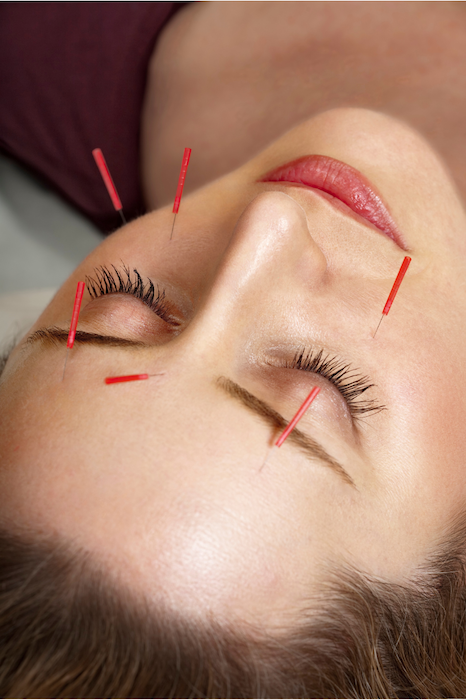
Acupuncture is a 3000 year old Chinese medical practice that involves the insertion of thin needles into the body at specific points. According to traditional Chinese medicine, this helps to improve the flow of energy or “qi” in the body. While acupuncture has been used to treat a variety of conditions, recent studies have shown that it can be an effective treatment for migraines.
One study found that acupuncture was more effective than medication in reducing the frequency and severity of migraines. In addition, acupuncture is believed to be a safe treatment with few side effects. This is important because many migraine medications come with a long list of potential side effects. Finally, acupuncture is a drug-free option for those who are looking for an alternative to medication. If you are suffering from migraines, talk to your doctor about whether acupuncture might be right for you.
8. Reduce screen time
Staring at a screen all day can cause eye strain, which in turn can lead to a migraine. Additionally, the blue light emitted by screens can disrupt your natural sleep cycle, making you more susceptible to migraines. Reducing your screen time can help to lessen the frequency and severity of migraines. By taking breaks throughout the day to give your eyes a rest, and avoiding screens for at least an hour before bedtime, you can help to reduce your risk of migraines.
9. Avoid lights and noise
One of the most effective ways to reduce the severity of a migraine is to avoid bright lights and loud noises. These stimuli can trigger a migraine or make existing symptoms worse. If possible, try to stay in a dark, quiet room until the migraine has passed. Additionally, you may want to consider wearing earplugs or an eye mask to further reduce exposure to potential triggers. While it is not always possible to completely avoid all light and noise, minimizing exposure can help to ease the discomfort of a migraine.
10. Stay active
Regular exercise has been shown to help reduce the frequency and severity of migraines. Exercise helps to release endorphins, which have natural pain-relieving properties. In addition, exercise can help to reduce stress levels and improve sleep quality, both of which can help to prevent migraines. Even if you don’t suffer from migraines, being active is always a good idea!
11. Try a hot or cold compress
Another good treatment for migraines is the use of hot or cold compresses. Applying a warm compress to the forehead and temples can help to soothe migraine pain, while a cold compress can help to reduce inflammation. Some people find relief by alternating between hot and cold compresses, while others find that one or the other works best for them. Whichever approach you choose, be sure to wrap the compress in a towel to avoid causing any further irritation. With a little trial and error, you should be able to find a method that provides some relief from your migraines.

12. Deep breathing exercises
Slow, deep breathing helps to relax the body and relieves stress. In addition, it increases the flow of oxygen to the brain, which can help to reduce inflammation and ease pain. While deep breathing exercises won’t cure migraines, they can help to reduce the frequency and severity of attacks. For best results, practice deep breathing exercises on a regular basis, even when you’re feeling well. That way, you’ll be prepared the next time a migraine strikes.
13. Cut down on caffeine
Caffeine is a common trigger for migraines, and cutting back on coffee, tea, and soda can help reduce the frequency and severity of headaches. Caffeine withdrawal can also cause headaches, so it’s important to cut down gradually rather than going cold turkey. If you typically drink a lot of caffeine, start by cutting back to one cup a day, and then eventually eliminating it completely from your diet. During headache episodes, avoid all forms of caffeine, as even small amounts can make the pain worse. By making this simple change, you can significantly reduce your risk of headaches.
14. Try magnesium
For many people, magnesium deficiency can actually trigger migraines. Magnesium is a mineral that’s involved in over 600 processes in the body, including muscle contraction, nerve transmission, and blood sugar regulation. It’s also thought to have a calming effect on the brain, which may explain why magnesium supplementation has been shown to be effective in reducing the frequency and severity of migraines. If you’re suffering from migraines, magnesium may be able to help you.
In fact, research has shown that magnesium supplements can not only prevent migraines, but treat them as well! [1, 2]
This is one of the many, MANY reasons why our friends over at Purality Health have made a highly absorbable magnesium. It comes in easy-to-take pouches and tastes delicious (like vanilla)!
To see the several other ways that their magnesium could help you, along with ingredients, and how you can save up to 25% today…
I hope these tips help!
If you’re one of the millions of people who suffer from migraines, you know how debilitating they can be. The good news is that there are many things you can do to help prevent or reduce the severity of attacks. In this article, I’ve listed fourteen self-care tips that have been shown to be effective for migraine sufferers. I truly hope they’re able to help you or a loved one get through these painful and inconvenient episodes.
Anti-Cellulite Coffee Lotion And Scrub Recipe
While there’s no surefire cure for cellulite, there are some things that can help reduce its appearance. And believe it or not, one of these is caffeine!
Caffeine helps stimulate blood flow and promote the production of collagen, both of which can help improve the appearance of cellulite. Additionally, caffeine helps to temporarily tighten the skin, making it look smoother and more toned.
While the effects of caffeine may be temporary, they can help make a noticeable difference when it comes to reducing the appearance of cellulite.
For best results, apply a coffee-infused lotion before going to bed or use a scrub in the shower. The active ingredients will work to temporarily smooth and tighten your skin while you sleep or or go about your day, resulting in a more toned appearance.
If you’re interested in trying this out, I have the BEST homemade coffee lotion. It does require a bit of work to make, but trust me – it’s worth it. You’ll be getting the most out of these ingredients, plus a batch of lotion that will last you quite some time!
If you want something a bit easier to make, I also have a coffee scrub recipe below that can do wonders!
Check them out:

DIY coffee lotion recipe
This lotion can not only help with cellulite, it’s moisturizing and can offer a bronze tint PLUS the wonderful smell of coffee.
While this recipe may call for certain things, you can feel free to experiment within reason. For example, I use olive oil, but you can feel free to use hazelnut oil or almond oil.
Let’s get into it!
Here’s what you’ll need:
- Coffee infused oil (see below)
- 1 cup preserved aloe vera gel
- ½ cup coconut oil (melted if needed)
Here’s what you’ll need to do:
The first thing you need to do is infuse the oil with the coffee. This is the most lengthy part of the process. But again, it’s well worth it!
- To start, put ½ cup of unused coffee grounds and 1 cup of olive oil in a glass container. Close it, place it somewhere nice, dry, and dark. Then allow it to infuse for at least two weeks.
- Once infused, strain your oil. I use a coffee filter, but this does go slowly. So set it, and leave it for a few hours to capture all of the oil. You can also try using a cheesecloth, panty hose, or another way to filter it if you’d like things to go along quicker.
- Now you have your coffee infused oil and it’s time to put it all together! Mix ½ cup of your coffee infused oil with everything else. Blend or which thoroughly until it’s a lotion-consistency.
- Before bed or after a shower, massage your lotion into your legs, butt, or anywhere else you’d like to help your skin!
Congratulations, now you have a wonderful, clean, homemade lotion that can help your cellulite and your skin!
Store this lotion in a dark, air-tight container in the fridge and use it within four to six weeks!
DIY coffee scrub
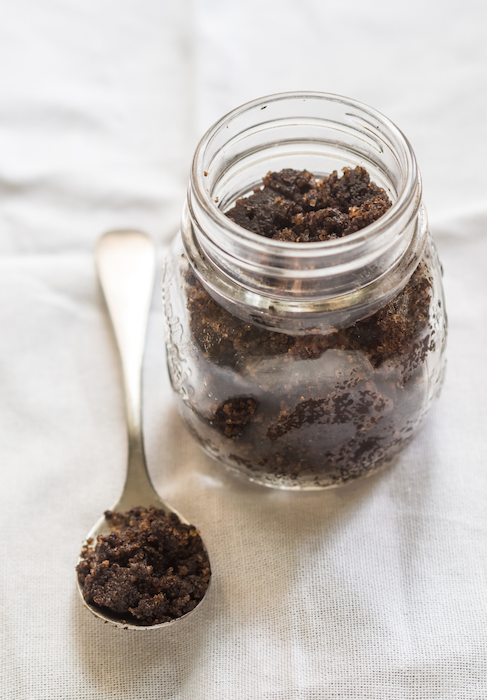
If you want something NOW and not in weeks – or if you want something to start tackling that cellulite while you wait for your coffee oil to infuse, try this coffee scrub! You can whip it up in a few minutes and use it every time you shower!
Here’s what you’ll need:
- 1 cup coffee grounds
- 6 tablespoons coconut oil
- 3 tablespoons sea salt or sugar
Here’s what you’ll need to do:
- Mix all ingredients in a container, first melting the coconut oil if needed.
- You can store it in a glass jar, but I’m too nervous about dropping it in the shower, so I use a plastic container!
- In the shower, apply the scrub to areas with cellulite. Massage the scrub onto the skin in a circular motion for a minute before rinsing. For best results, do this every time you shower.
Something else to help cellulite…
Collagen is the protein that makes up your skin. It keeps it plump, smooth, and allows it to retain its shape.
So it makes sense that increased collagen intake can help with cellulite!
Like in this study from 2015 in which women with cellulite took a daily collagen supplement for six months only to have a “clear improvement” in their skin appearance. [1]
Imagine if you used the coffee lotion AND took collagen?
To see how that goes for you, I’ll give you six months to try my Complete Collagen Plus.
I suspect it will work better and faster than the collagen used in the study above since Complete Collagen Plus is designed to be absorbed and used by your body.
But if not…
Simply return your order – yes, even used and open boxes – within six months for a FULL refund!
>>> Click here to make the change your skin has been asking for
References
6 Surprising Benefits Of Cinnamon
Do you love the taste of cinnamon?
I know I do. Which is why I was delighted to learn that this delicious spice is not only tasty, but it also has a number of health benefits!
In this article, I’ll discuss some of the surprising benefits of consuming cinnamon so that you can get more than just the joy of its taste. If you’re looking for a way to improve your health, adding cinnamon to your diet is a great place to start!
Keep reading to learn why!
1. Cinnamon is a good source of antioxidants
Antioxidants are important because they help to protect your cells from damage. Cinnamon is especially rich in a type of antioxidant called polyphenols. These substances have been shown to help reduce inflammation and protect against chronic diseases such as heart disease and cancer.
So not only is cinnamon delicious, but it’s also good for you! Next time you’re looking for a healthy way to add some flavor to your food, reach for the cinnamon.
2. It has anti-inflammatory properties
Cinnamon contains a compound called cinnamaldehyde, which has been shown to reduce inflammation in the body. This can be helpful for conditions like arthritis, Crohn’s disease, and ulcerative colitis.
Chronic inflammation is a precursor to many types of disease, so anything that can help your body regulate inflammation better is a great thing!
3. Cinnamon may reduce the risk of heart disease

Recent studies have shown that cinnamon can help lower cholesterol levels and improve blood sugar control. These effects are thought to be due to the presence of the antioxidant compounds known as polyphenols.
In addition, since inflammation is a key factor in the development of heart disease, cinnamon can help there too. By reducing inflammation, cinnamon may be able to reduce the risk of heart disease.
Additionally, cinnamon has been shown to improve blood flow and reduce blood pressure. These effects also contribute to its ability to reduce the risk of heart disease.
4. The spice can improve insulin sensitivity and control blood sugar levels
Cinnamon can improve insulin sensitivity in a number of ways.
First, cinnamon helps increase the body’s production of insulin. Second, cinnamon helps reduce the amount of sugar that is absorbed into the bloodstream. And third, cinnamon helps improve the body’s ability to use insulin. All of these effects can help keep blood sugar levels under control and reduce the risk of diabetes.
In addition, cinnamon has been shown to have other health benefits, such as reducing inflammation and improving cholesterol levels. Therefore, adding cinnamon to your diet is a simple and effective way to improve your health and well-being.
5. It can support brain health
Research shows that cinnamon can also support brain health. This is because cinnamon contains compounds that help improve cognitive function and protect the brain from damage.
For example, one study found that cinnamon helped improve memory and learning in people who experienced a traumatic brain injury (TBI).
Cinnamon is also a powerful antioxidant, and it has been shown to reduce inflammation in the brain. These properties make cinnamon an ideal tool for protecting the brain from age-related decline.
In addition, cinnamon has been shown to enhance the effects of other brain-healthy nutrients, such as omega-3 fatty acids. As a result, including cinnamon in your diet can be a simple and effective way to support brain health.
6. Cinnamon may protect against cancer
Numerous studies have shown that cinnamon can help protect against cancer. The main active ingredient in cinnamon, cinnamaldehyde, has been shown to kill cancer cells by inducing cell death and inhibiting tumor growth. Cinnamon extract has also been shown to reduce the spread of breast cancer cells.
In addition, cinnamon’s anti-inflammatory and antioxidant properties may help protect healthy cells from damage and prevent the formation of cancerous tumors.
The difference between Cassia cinnamon and Ceylon cinnamon
Not many people realize this, but not all cinnamon is the same.
When it comes to cinnamon, there are two main types: cassia cinnamon and Ceylon cinnamon. Both types come from the bark of evergreen trees, but they differ in taste, aroma, and nutritional value.
Cassia cinnamon is the more common variety and has a strong, pungent flavor. It is often used in baking and savory dishes alike.
Ceylon cinnamon, on the other hand, is milder in flavor with a hint of citrus. It is also more expensive than cassia cinnamon.
Nutritionally, Ceylon cinnamon is a good source of manganese and fiber, while cassia cinnamon contains coumarin, a compound that can be toxic in large amounts.
If you’re simply baking with it occasionally, Cassia should be okay in those low amounts. However, if you’re taking it daily for the benefits, you may want to consider using Ceylon.
A great way to get a taste of cinnamon
Now that you know how amazing cinnamon is, you may be craving it!
Well, you don’t need to go baking every day! When you take Complete Biotin Plus, you’re getting the amazing taste of cinnamon every day!
This is just one of the many great reasons to take Complete Biotin Plus.
To learn what the others are and to see how they can all help you…
